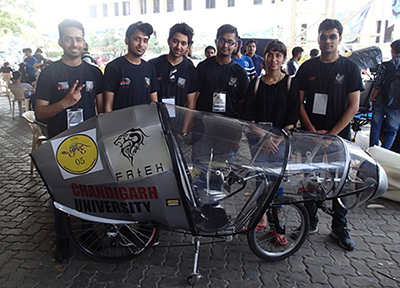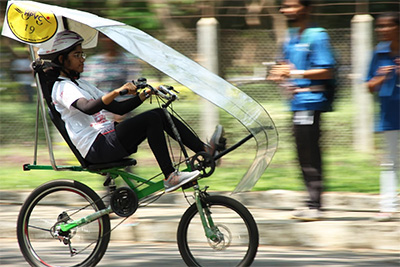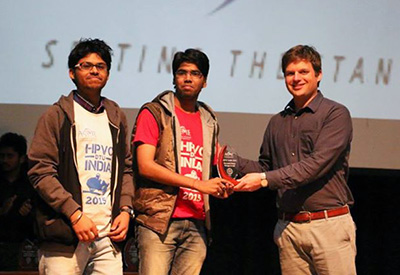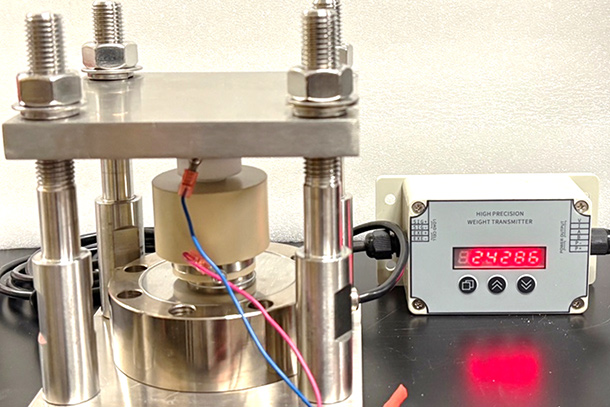HPVC India Gains Momentum in Third Year
HPVC India Gains Momentum in Third Year

Since its launch in 2014, the Human Powered Vehicle Challenge (HPVC) event in India has become bigger and more successful with each passing year. This year, 40 teams and nearly 600 students from universities across India competed at HPVC India, which was hosted by VIT University in Vellore, India.
For more than 30 years, the ASME HPVC program has provided engineering students with the opportunity to demonstrate their skills at applying sound engineering design principles while developing sustainable and practical transportation alternatives.
This year’s HPVC India competition, which took place from March 17 to 19 at VIT’s sprawling campus, consisted of design and innovation evaluations, a drag race speed competition, and an endurance event. It was held in conjunction with the ASME Students Professional Development Conference (SPDC) and Mechnovate, a mechanical engineering symposium that was sponsored by ASME and VIT.
At the end of three heated days of competition, Fateh, the entry from Chandigarh University, was named the overall winner of the 2016 HPVC India. The team took top honors in the design category and second place in the innovation category. KIIT University placed second overall with its vehicle, KETAV, while B.H. Gardi College of Engineering and Technology took third place overall with its entry, Sayugavan.

Other big winners at this year’s HPVC India included XLR8, the entry from the Mukesh Patel School of Technology Management and Engineering, Shirpur, which placed first in innovation; a second entry from B.H. Gardi College of Engineering and Technology, PRAESTO, which was the winner of the speed event; and Sir M. Visvesvaraya Institute of Technology’s vehicle Team Helios, which took first place in the endurance event.
Nathan Taylor, the head judge for HPVC India, was truly impressed by both the quality of the entries and the resourcefulness the students showed in the materials they used. One major difference between the HPVC in India and those held in the United States, he said, was that the teams competing in the Indian event often use recycled steel and aluminum when building their vehicles.
"Some teams are pretty creative with utilizing recycled materials," he said. "That's something we see a lot in India. Some schools don't have such great resources, so they take existing bicycle parts and they chop them up and turn them into new vehicles. One team I talked to, from a remote part of India, said they just went to the scrap yard and found what they could because they couldn't obtain the materials that they wanted. They couldn't buy pieces of steel, so they went to the scrapyard and found what they could. There's quite a bit of that going on."
Taylor said he was also struck by the upbeat attitude the students brought with them to the competition. “A lot of teams that didn’t do that well this year they were really positive about it,” he said. “They said they had a great experience and they want to come back next year and do better.”

One such team hailed from Chandigarh Polytechnic College in Punjab, a school that would be considered the equivalent of a U.S. community college, Taylor said. The students, who were young compared to the other students and competing at their first HPVC, built an impressive vehicle that suffered a catastrophic failure during one of the events. “Their vehicle was all aluminum and very well built,” Taylor recalled. “It looked very nice, but unfortunately the frame broke, and they couldn’t ride anymore. But they left with a good attitude. They were excited to build another one and come back the next year.” The team didn’t leave this year’s competition empty-handed, however. The students were given a special achievement award for their efforts.
Describing the competition in India as “incredibly successful,” Taylor added, “I think the biggest thing that stands out is just how much participation we have. The students are extremely excited and they bring everyone that they can to come to these competitions. They all seem to have a great time. The teams are evolving every year and every year they’re going to get better.”
HPVC India was the first of three HPVC events ASME will hold this spring. The next competition, HPVC West, will take place April 22-24 in San Jose, Calif. HPVC East will be held May 13-15 in Athens, Ohio.
For more information on HPVC India, or to view the complete list of results from the competition, visit https://community.asme.org/hpvc/w/wiki/11346.results.aspx#2016-Results-India. For more information on the ASME Human Powered Vehicle Challenge program, visit https://community.asme.org/hpvc/default.aspx.




